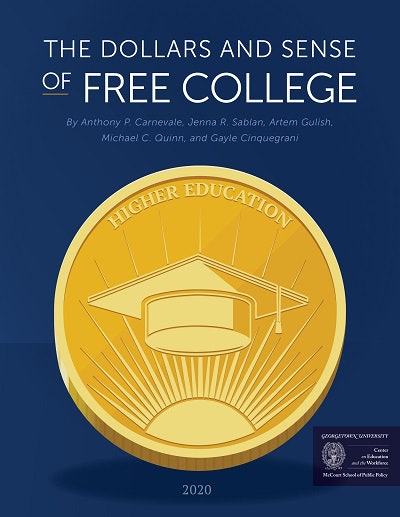A new report from the Georgetown University Center on Education and the Workforce (CEW) measures the costs of free-college models, including the plan proposed by Democratic presidential candidate Joe Biden.
Increasing access to higher education has long been a political talking point, says Dr. Anthony P. Carnevale, lead author of the CEW report issued Tuesday titled, “The Dollars and Sense of Free College.” While the costs can be high, the report notes that the annual benefits of free public college would exceed the annual costs of the program within a decade.
Biden’s plan proposes that eligibility would be limited to students at four-year colleges whose annual family income is less than $125,000. This “free-college” program would cover public college tuition, and existing financial aid could be used for other attendance-related expenses, such as housing and textbooks. In its first year, Biden’s plan would cost $49.6 billion. Over 10 years, the cost would total $683.1 billion.
CEW researchers, who examined different ways of applying the free-college concept, project that free-college programs could yield a return of $1.2 trillion within the first 11 years. With college degrees and other credentials in hand, graduates would secure better paying jobs and pay more in income tax. There would also be noneconomic benefits such as improved health and reduced crime.

“The federal government will set standards and demand transparency in outcomes for students and demand that those outcomes be reported to new students,” said Carnevale.
The researchers wrote that Biden’s free-college plan is targeted to lower-income students with 29% of the funding going to students in the bottom income quartile. Biden’s plan also accounts for proportional distribution by race. Black students would receive 14% of the funds and Latinx students would receive 19%.















